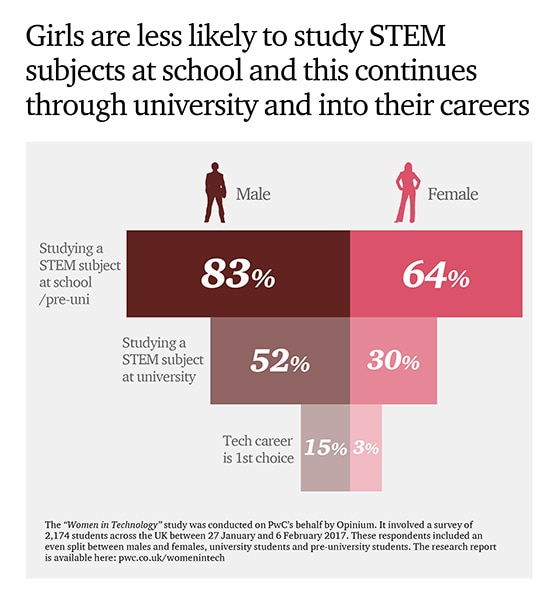
Our research with over 2,000 A-Level and university students shows that the gender gap in technology starts at school and carries on through every stage of girls’ and women’s lives.
Only 27% of female students we surveyed say they would consider a career in technology, compared to 61% of males, and only 3% say it is their first choice.
We’re using the power of intelligent digital to see beyond the gender gap, to a world where women can reimagine our future. We created a women in technology programme and degree, changing the ground rules to make technology a more attractive, inclusive, working environment for all.
We provide more detailed analysis and four actions the industry should take in the full report, which you can download below.

Our women in technology leader, Sheridan Ash, discusses the key findings from our women in tech research
Key findings
Females aren’t considering technology careers as they aren’t given enough information on what working in the sector involves and also because no one is putting it forward as an option to them.
A lack of female role models is also reinforcing the perception that a technology career isn’t for them. Only 22% of students can name a famous female working in technology. Whereas two thirds can name a famous man working in technology.
Over a quarter of female students say they’ve been put off a career in technology as it’s too male dominated.
Technology organisations need to highlight how technology is a force for good if they want to attract more females to the sector. Half of females say that feeling like the work they do makes the world a better place is the most important factor when deciding their future career.









